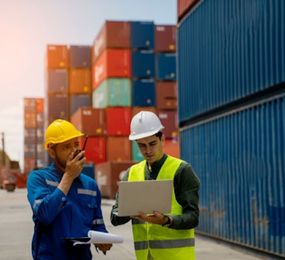Companies across sectors are under pressure to gain visibility into their multi-tier supply chains and to share more information with their customers, partners, and stakeholders.
Supply chain visibility refers to having knowledge about the activities and performance across a manufacturing supply chain, from supplier to consumer.
Supply chain visibility is the process of tracking the movement of materials and products upstream and downstream. It includes information on sourcing, inventory, warehousing, delivery, production facilities and equipment, distribution, and environmental impact — everything a manufacturer needs to have a thorough understanding of operations at each tier of the supply chain.
Manufacturing companies may discover problems, enhance performance and response times, and lower operational risk thanks to supply chain visibility, which gives them real-time access to information about every part of their supply chain.
The importance of supply chain visibility has risen along with globalisation and supply chains' rising complexity.
The term "supply chain transparency" is a method for informing stakeholders about the supply chain and sourcing. The parameters of transparency include what information you will disclose, to whom, and when. Any company that wants to be seen needs to think about transparency from the beginning.
A powerful method of exhibiting sustainability efforts and openness to stakeholders is by increasing transparency. Many companies have used transparency in response to criticism, where achieving full traceability is currently impossible.
One key to a resilient supply chain is digitalization. And with a more digitised supply chain, you can handle disruptions better, faster, with less complexity, and at a lower cost.
Companies that are sustainable are resilient companies, and no company can make this claim without having a sustainable supply chain. Responsible design techniques, moral sourcing, sustainable manufacturing techniques, and secure upkeep and services are essential to success.
You can more successfully minimise waste, cut emissions, and lower your carbon footprint if you have extensive visibility into supply chain data and the capacity to assess and verify partner practices. Additionally, by incorporating sustainability practices into your daily operations, you can comply with regulations more successfully and live up to all stakeholders' and regulatory authorities' expectations.
Join us on 30th - 31st may, 2023 for the Supply Chain Risk and Resilience Forum, in Berlin, Germany so you don't feel left out in the industry!
To register or learn more about the Forum please check here: https://bit.ly/3DsfWE4
For more information and group participation, contact us: [email protected]
















